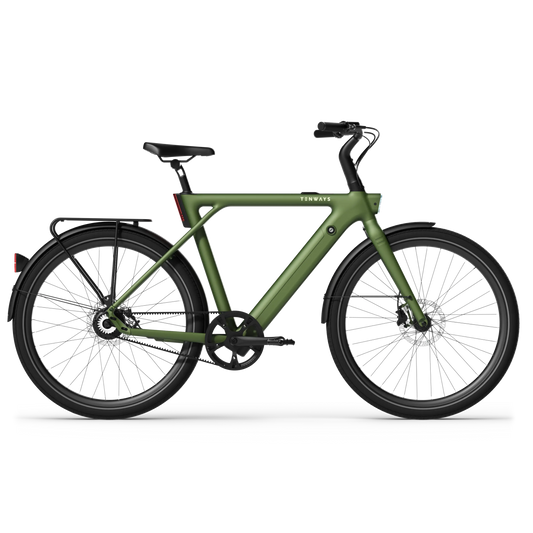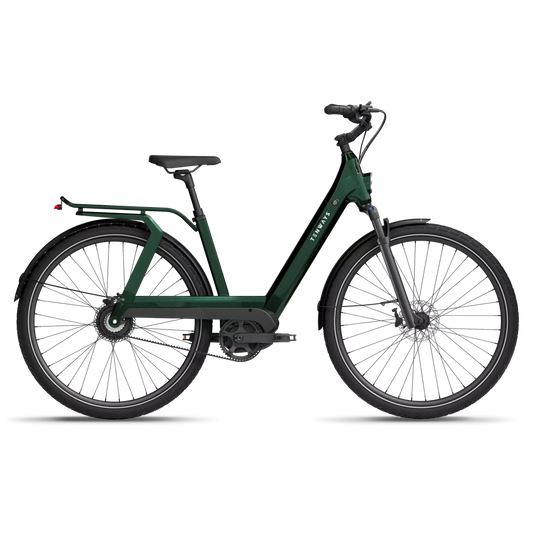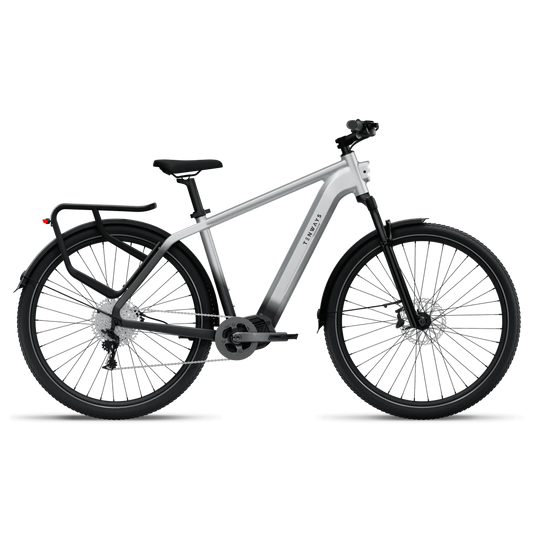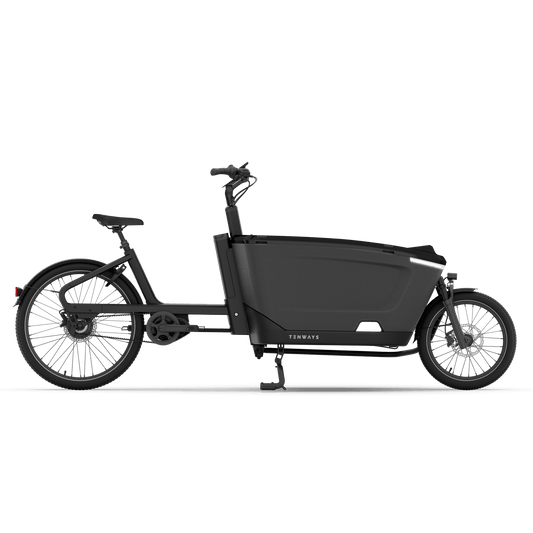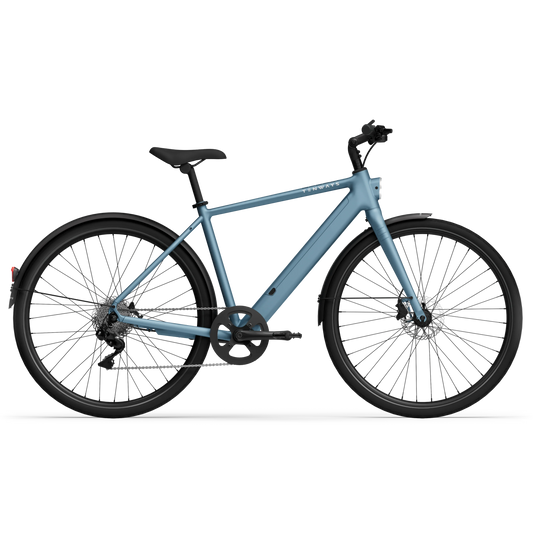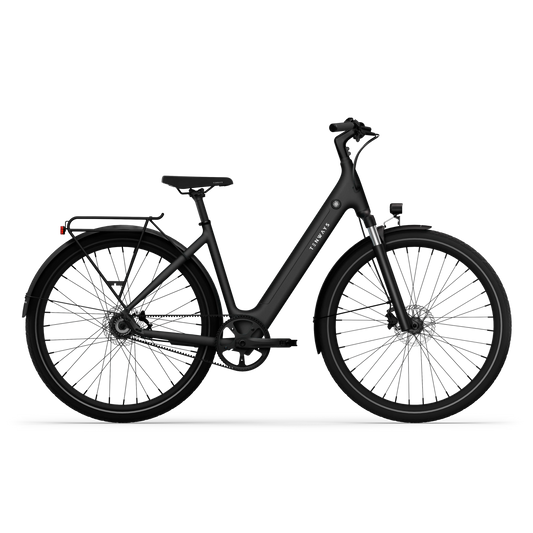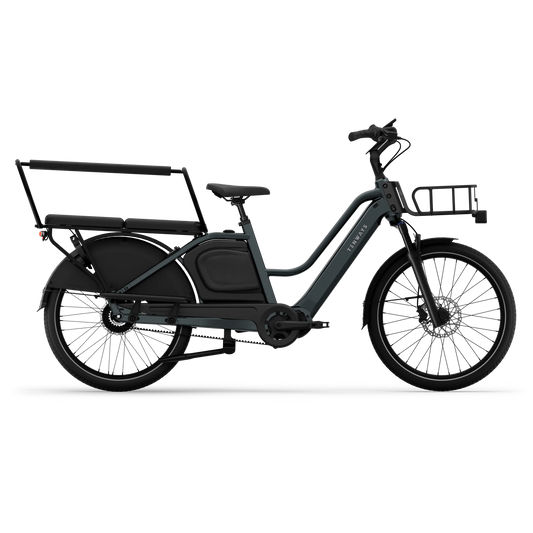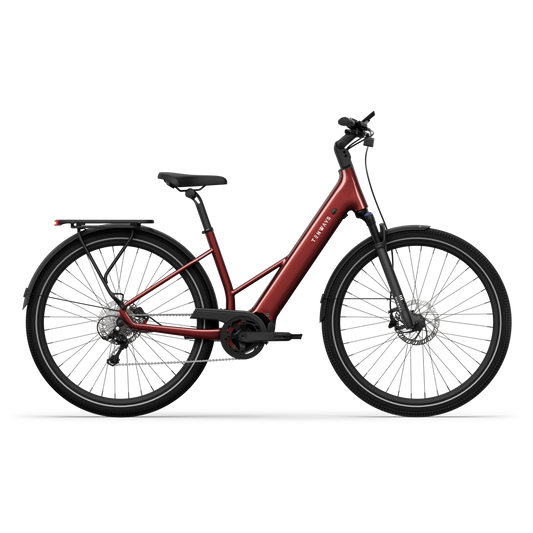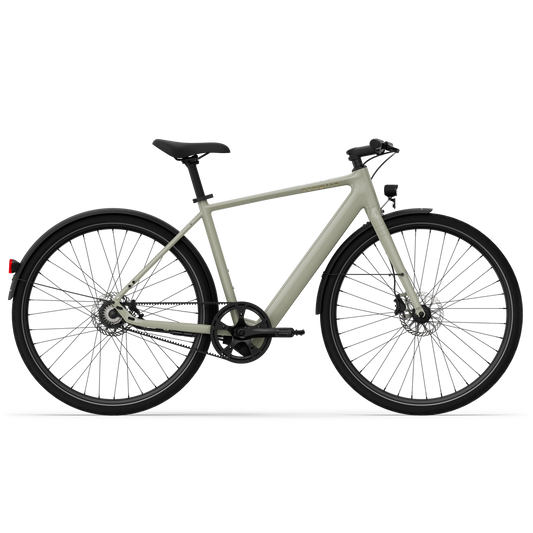Introduction
Winter in Europe usually means falling temperatures, wet roads, and slippery commuting conditions — not ideal for a safety-conscious e-bike rider.
E-bike brakes are the critical safety component for navigating slippery urban streets, whether you're coming to a stop at traffic lights and crossings or parking up at your office.
In this guide, we'll cover how to choose the best e-bike brakes to keep your rides safe and secure.

How to choose e-bike brakes
When choosing the best braking system for your e-bike, it's important to consider the following factors rather than get bogged down with technical details:
- Stopping power and safety: Can the e-bike slow down and stop effectively, even at higher speeds and with the e-bike's added weight?
- Control and modulation: Does the lever feel smooth and precise when applying force?
- Cost and value: The initial cost versus the long-term performance and reliability the system offers.
- All-conditions performance: Is the brake system appropriate for wet, muddy conditions, too?
Understanding the key components of a braking system and matching them with your riding needs and budget is the best way to find the most effective option.
E-Bike brake types: pros & cons
Now that we've covered the basics, let's dive into the main e-bike brake types to help you choose the best fit.
Mechanical brakes
Mechanical brakes rely on steel cables (not fluid) to move the brakes. When pulling the lever manually, a cable is tightened that activates the calliper arm, pressing the pads to the rotor.
The biggest benefits of mechanical brakes are the lower cost and their overall easier repairs and maintenance due to easy adjustments and replacements, even with basic tools.
However, a drawback is the greater exertion required, as mechanical brakes need greater hand force for a more powerful and more abrupt stop. Additionally, they can be worse in wet conditions due to exposed cabling, and are prone to excess wear due to cables stretching.
Hydraulic disc brakes
Hydraulic disc brakes use fluid pressure to transmit force from the lever to the calliper, stopping the e-bike.
Hydraulic brakes have powerful, reliable performance due to the precise application of braking force, with the sealed fluid system making it an all-conditions option for year-round, varied terrain riders.
Self-adjusting callipers also keep the lever feel consistent and compensate for pad wear, and though maintenance is required, it's minimal (annual system check, circuit bleed, replacing brake fluid).
Initial costs are higher for hydraulic systems, however, and repairs and bleeding require proper tools or mechanic expertise, which may be drawbacks for some riders.

Rim brakes
Rim brakes stop the bike by squeezing two opposing brake pads against the rim of the bike wheel.
Rim brakes have lower costs and overall maintenance due to having easily replaceable parts that are easy to adjust without special tools, alongside more lightweight components.
The primary drawback of rim brakes is reduced reliability and consistency, particularly in different weather conditions, with friction on the rim surface also requiring wheel replacement or causing potential heat buildup that compromises braking ability.
Here's why hydraulic disc brakes stand out
When weighing up the available options, hydraulic disc brakes are often the best choice from a practicality perspective for their blend of power, precision, and peace of mind.
Here's why:
- Better modulation and control: Commuting can be hectic, which makes the ability of hydraulic disc brakes to stop gradually or firmly highly useful, alongside the ease of navigating traffic, downhill rides, or more varied terrain.
- Less lever effort: Nobody wants hand cramp during longer rides or frequent stops – hydraulic disc brakes require less hand strength.
- All-weather performance: Disc brakes are consistent in wet or muddy conditions, making them more reliable.
- Low ongoing maintenance needs: Self-adjusting callipers reduce the need for manual fine-tuning, and occasional bleeding is needed to maintain responsiveness.

How to take care of hydraulic disc brakes
Fortunately, the maintenance of hydraulic brakes is simple and effective!
All you need to do is regularly clean your rotors, making sure to inspect pads for wear and replace if needed.
It's also important to bleed the system if your brakes feel spongy or unresponsive, and to check for any leaks or damaged hoses over time.
The best e-bike brakes are the ones that suit your needs
There's no 'one size fits all' brake system that is perfect for every rider — finding the perfect e-bike brake system is about tailoring your choice to your riding needs.
For those who prioritise consistent braking, reduced hand fatigue, and better control across a variety of conditions, hydraulic disc brakes are worth the investment.
Once you match your riding style and conditions to the pros of a specific brake system, you'll be able to make the most informed choice!
